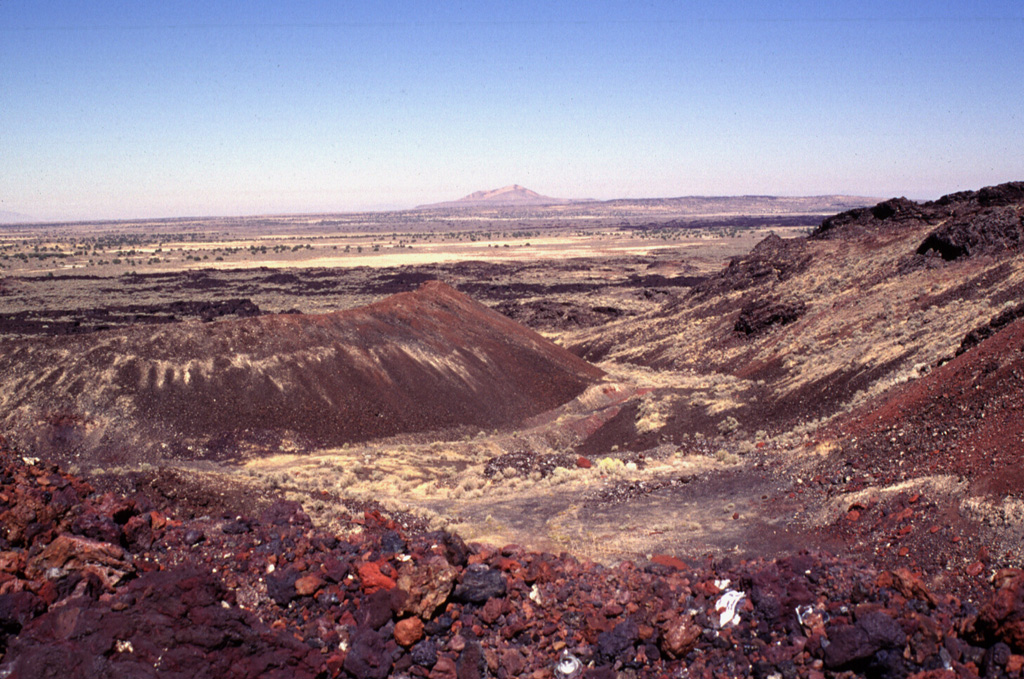Global Volcanism Program | Image GVP-04592

The Black Rock Desert volcanic field consists of a cluster of closely spaced small volcanic fields of Pleistocene-to-Holocene age in the Black Rock and Sevier deserts. This view shows Utah's youngest known lava flow, the 660-year-old Ice Springs flow, which originated from a series of nested cinder and spatter cones. The rim of Crescent Crater is at the right, with the symmetrical Pocket Crater at the left and Pavant Butte in the distance. This tuff cone erupted through the waters of Pleistocene Lake Bonneville about 16,000 years ago.
Photo by Lee Siebert, 1996 (Smithsonian Institution).
![]() This image is made available under the Public Domain Dedication CC0 license, but proper attribution is appreciated.
This image is made available under the Public Domain Dedication CC0 license, but proper attribution is appreciated.

Black Rock Desert
